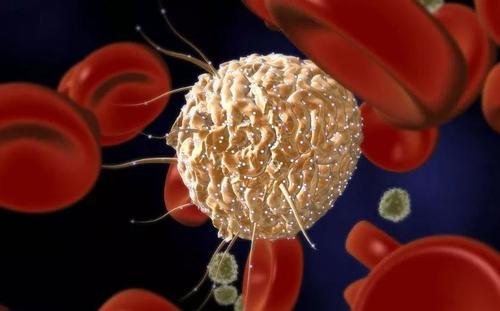Once the aminoacyl-tRNA is bound to the A-site, the ribosome is ready for peptide bond formation, which is catalyzed by the peptidyl transferase activity of the 50S ribosomal subunit. This reaction begins with the nucleophilic attack of the amino group of the A-site tRNA on the partially positively charged carbonyl carbon atom in the ester bond that links the peptidyl (or fMet) group. To the P-site tRNA. The resulting tetrahedral transition state rearranges to produce an uncharged tRNA at the P-site and. apeptidyl-tRNA at the A-site with one more amino acid than the original peptidyl-tRNA.
The initial method for assaying peptidyl transferase activity required an intact ribosome, mRNA, a P-site peptidyl-RNA and an A-site aminoacyl-tRNA, making it difficult to determine whether peptidyl transferase or some other factor required for peptide bond formation was being monitored. A more direct assay for peptidyl transferase activity was required. The antibiotic puromycin, which is produced by the gram-positive bacteria Streptomyces alboniger, helped to solve the problem. Puromycin is remarkably similar in structure to the tyrosyladenosine group at the 3’-end of Tyr-tRAN. Because of this close resemblance, peptidyl transferase can use puromycin as a substrate in place of aminoacyl-tRNA at the A-site. As a consequence of this relaxed substrate recognition, the peptidyl transferase transfers a peptidyl group from a peptidyl-tRNA at the P-site to puromycin, causing premature polypeptide chain termination and peptidyl-puromycin release. Thus puromycin can serve as a model substrate for the peptide bond-forming reaction and is well-suited for the study of this reaction.
In the mid-1960s, Robin Monro and coworkers used their knowledge of puromycin’s mechanism of action to devise a direct method to measure peptidyl transferase activity, called the fragment assay. This assay measures fMet-puromycin formation when a mixture containing 50S ribosomal subunits, a 3'-fragment of peptidyl-tRNA such as CCA-fMet, and puromycin is incubated in a buffer solution containing 30 to 50% methanol or ethanol. The alcohol appears to enhance the affinity of low molecular mass P-site substrates for the 50S ribosomal subunit. The fragment reaction does not require the 30S ribosomal subunit or mRNA. It also does not require ÀTP or GTP, indicating that the peptidyl transferase reaction does not require a source of energy other than that already present in the ester bond that links the peptide group to tRNA.
Investigators initially thought that the catalytic site responsible for peptidyl transferase activity in the 50S ribosomal subunit was made of one or more ribosomal polypeptides.
The discovery that some RNA molecules act as catalysts prompted molecular biologists to consider the alternative hypothesis that RNA forms the catalytic site. This hypothesis received experimental support in 1992 when Harry F. Noller and coworkers showed that ribosomes from the thermophilic bacteria Thermus aquaticus completely lose their peptidyl transferase activity when treated with ribonuclease T1 but retain more than 80% of this activity after treatment with proteinase K and sodium dodecyl sulfate followed by phenol extraction. Moreover, the peptidyl transferase activity remaining after protein removal appeared to be physiologically significant because it retained its sensitivity to chloramphenicol and carbomycin, antibiotics known to inhibit peptidyl transferase. Although Noller's experiments suggest that peptidyl transferase activity resides in the ribosomal RNA, they did not completely rule out participation by ribosomal proteins because the treated ribosomes still retained about 10% of their polypeptides.








